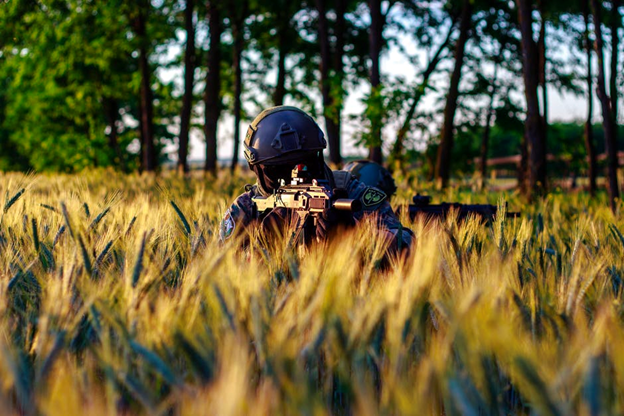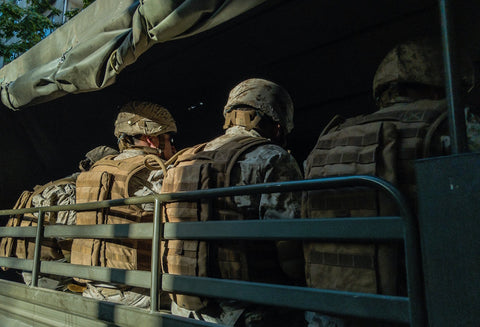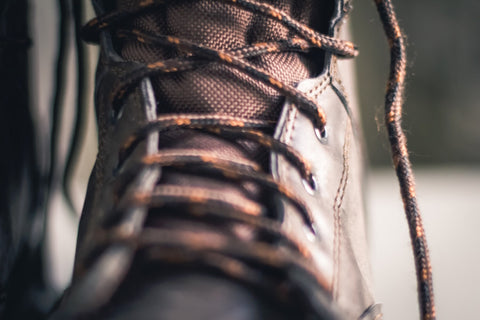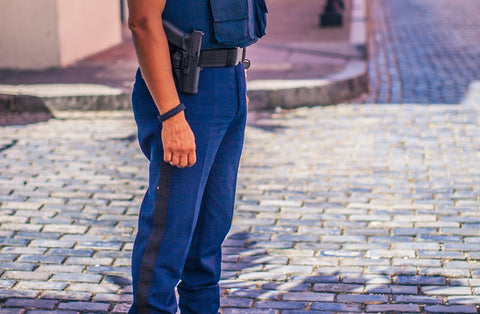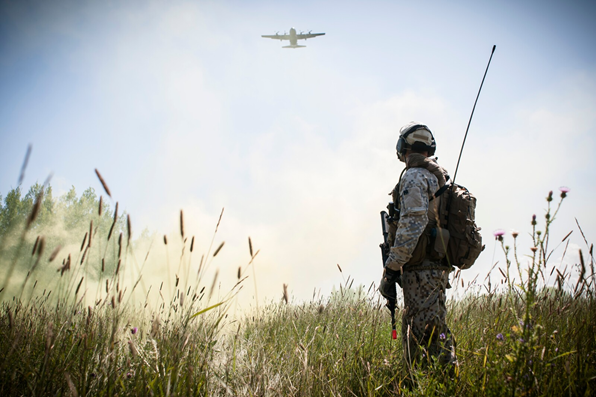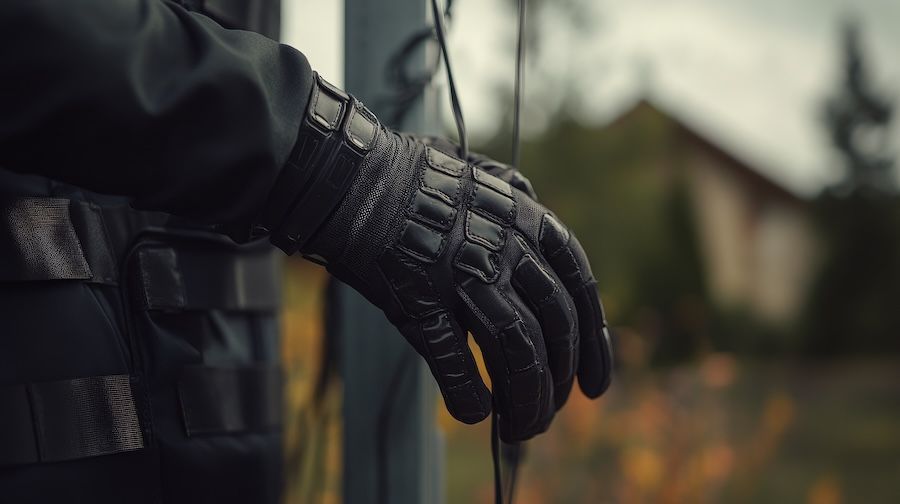Non-Lethal Tactical Gear for Event Security
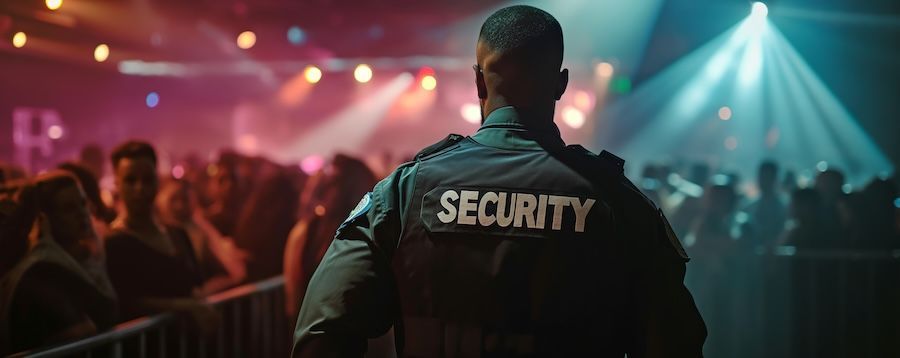
Event security is more than just a visible presence - it’s about creating a safe and controlled environment where participants can enjoy themselves without fear. Whether it's a concert, festival, sporting event, or any other large gathering, security personnel need to be equipped to handle anything from large crowds to potential threats without resorting to harmful force.
Non-lethal tactical gear is specifically designed to allow security professionals to manage dangerous situations effectively, without putting anyone at unnecessary risk. The right tools not only enhance the security staff’s ability to protect the public but also provide options for neutralizing threats in a manner that is proportionate, safe, and controlled.
With the growing unpredictability of large public gatherings, the importance of non-lethal tactical gear cannot be overstated. From dealing with unruly attendees to preventing potential acts of violence, non-lethal gear provides the means to respond efficiently while keeping the peace.
Legal Considerations for Non-Lethal Gear in Event Security
While non-lethal tactical gear is essential for event security, security personnel must understand the legal implications of using such tools. Different jurisdictions have varying laws and regulations regarding the use of specific non-lethal gear, including batons, tasers, pepper spray, and restraints.
Security teams must be trained not only in how to use these tools but also in the legal frameworks that govern their use.
For instance, some locations may require security personnel to be licensed or certified in the use of tools like stun guns or pepper spray. Furthermore, local laws may impose restrictions on where and when such tools can be deployed. In some cases, force is only permissible under specific circumstances, such as when a threat is imminent.
Being aware of the legalities ensures that security teams remain compliant with local laws and avoid potential legal liabilities. It also enhances the credibility of event organizers by demonstrating that they prioritize the ethical treatment of all attendees and staff.
Protective Gear: Ensuring Safety in Crowded Environments
Event security often involves physical proximity to large groups, where safety can be a concern for both security personnel and the crowd. Protective gear is a vital part of keeping security staff safe while allowing them to perform their duties effectively.
Body armour is essential when handling physical confrontations, as it provides a shield against potential harm. Bulletproof vests, stab-proof gear, and padded jackets are all part of modern body armour systems. Event security personnel often have to deal with pushing, shoving, or being struck by objects in high-tension situations, making protective body armor an essential part of their equipment.
In environments with a high risk of objects being thrown or aggressive behaviour escalating, helmets are crucial for protecting the head and face. Modern helmets are lightweight, durable, and designed to withstand blunt force, offering protection without hindering mobility.
High-quality gloves and boots ensure that security personnel have both the dexterity and protection they need to move freely and respond to threats effectively. Gloves also provide an extra layer of defence when physically restraining an individual or intervening in a potentially dangerous situation.
The goal is to create an environment where security personnel are as safe as possible while maintaining the ability to respond quickly and appropriately to any emergency.
Communication Tools: Coordinating in High-Tension Situations
Clear, effective communication is paramount in event security. In large-scale events, security teams often face chaotic and high-stress situations where quick, coordinated actions are crucial.
The ability to communicate instantly and without confusion can mean the difference between maintaining control and allowing a situation to spiral out of hand.
Radios are the most common form of communication used by event security staff. High-quality, two-way radios allow for immediate communication between team members, whether in different sections of the event or at varying distances. These radios are often equipped with features like noise cancellation and encrypted frequencies to prevent interference or eavesdropping.
For larger events, earpieces and headsets are indispensable. They allow security personnel to communicate discreetly without alarming the crowd. Earpieces are especially useful for VIP protection or managing situations that require subtle coordination between different teams without causing unnecessary attention.
For hands-free communication, many security teams rely on push-to-talk (PTT) systems, which allow team members to communicate instantly with a single button press. These systems enhance speed and efficiency, ensuring that security can react to developments as they happen.
Non-Lethal Restraints for Crowd Control
During events, security personnel often encounter situations where an individual needs to be detained. Non-lethal restraints are an essential tool for maintaining control without causing harm to the individual or escalating the situation.
Handcuffs remain one of the most effective non-lethal means of restraining a person. They are quick to apply, portable, and can immobilize an individual while waiting for law enforcement or further intervention.
Zip ties are another useful alternative for quickly detaining someone, especially in cases where traditional handcuffs are not immediately available.
For large events, particularly those involving crowds that may require mass intervention, flex cuffs are a versatile option. They can be used to detain multiple individuals quickly and effectively, providing a temporary solution until law enforcement arrives or a more permanent solution is implemented.
Proper training is essential when using restraints. Improper application can lead to injury or excessive force. Event security personnel should be trained in how to apply restraints safely and when to release them if a situation de-escalates.
These non-lethal tools allow security personnel to maintain control over individuals in a manner that is both effective and humane, ensuring safety for everyone involved.
Non-Lethal Defence Tools: Managing Threats Without Escalation
At events where large crowds gather, the potential for conflict or violence is always present. Non-lethal defense tools provide security teams with options to neutralize threats effectively while minimizing the risk of harm to the individual involved.
Pepper spray is a popular non-lethal option for incapacitating an individual who poses a threat. It causes temporary blindness, difficulty breathing, and intense irritation, allowing security personnel to control the situation while the effects wear off. Some event organizers may choose to have pepper spray as a last resort option for handling aggressive individuals.
Keep in mind that pepper spray is illegal in Canada!
Stun guns and tasers are used to incapacitate individuals quickly by delivering a non-lethal electrical charge. These devices are especially useful in situations where the threat is violent, and immediate control is necessary. However, proper training is essential to ensure these tools are used appropriately and safely.
Batons are commonly used for crowd control. They allow security staff to maintain distance from an aggressive individual, using the baton to block or deflect attacks.
Tactical shields are also used to protect security personnel from thrown objects or physical altercations while maintaining a level of control over the situation.
These tools allow for rapid and effective intervention in high-risk scenarios, ensuring that threats are neutralized swiftly without the need for lethal force.
Visibility and Control in Low-Light Conditions
Many events take place in dimly lit areas or at night, making visibility a key concern for security teams. Non-lethal gear designed for use in low-light conditions is essential for ensuring that security personnel can do their jobs effectively, even after dark.
Tactical flashlights are a must-have for event security teams working in low-light environments. These flashlights are designed for durability, portability, and brightness, enabling security staff to identify potential threats, illuminate dark areas, and maintain visibility during crowd control operations.
For hands-free operation, headlamps and helmet-mounted lights are invaluable. They provide illumination while leaving security personnel’s hands free to manage the situation, whether it’s restraining an individual or guiding lost attendees.
Strobe lights can be used to disorient aggressive individuals or signal for backup when necessary. These lights can temporarily impair vision, giving security staff the upper hand in dealing with a threatening situation.
Having the right lighting tools allows security teams to maintain control in low-visibility situations, ensuring that they can act quickly and confidently in any environment.
Training and Continuous Improvement for Event Security Personnel
Non-lethal tactical gear is only effective when used by trained professionals. Continuous training is crucial for ensuring that event security teams are well-prepared to handle any situation, regardless of how unpredictable or dangerous it may be.
One of the most effective ways to train event security personnel is through scenario-based exercises. These simulations allow staff to practice deploying non-lethal gear in controlled environments that mimic real-world situations. Whether it’s managing a crowd, responding to a fight, or neutralizing a threat, these exercises provide security staff with the confidence and skill necessary to respond quickly.
Event security is a dynamic field that requires ongoing learning. New non-lethal gear, advanced techniques, and changes in the law require security teams to stay informed. Regular training sessions ensure that security personnel are always up-to-date on best practices and new technologies, keeping both staff and attendees safe.
In addition to technical training, security staff must also maintain physical fitness and mental resilience. High-stress situations require quick thinking and emotional control, so ensuring that security personnel are both physically and mentally prepared is vital.
Conclusion: The Role of Non-Lethal Gear in Creating Safe Events
Non-lethal tactical gear plays a critical role in modern event security, providing tools that allow personnel to manage crowds, neutralize threats, and ensure the safety of attendees without resorting to lethal force.
From protective gear and communication tools to restraints and defensive devices, non-lethal equipment enhances the ability of security teams to respond quickly and effectively to any situation.
However, it's not just about having the right tools—training, legal knowledge, and situational awareness are just as important. When used in the right circumstances, non-lethal tactical gear helps create an environment where people can enjoy events without fear, knowing that there are trained professionals on hand to keep them safe.
In the future, as the landscape of event security continues to evolve, non-lethal tactical gear will remain a vital part of the equation, providing a way to balance safety and effectiveness while minimizing harm to everyone involved.


